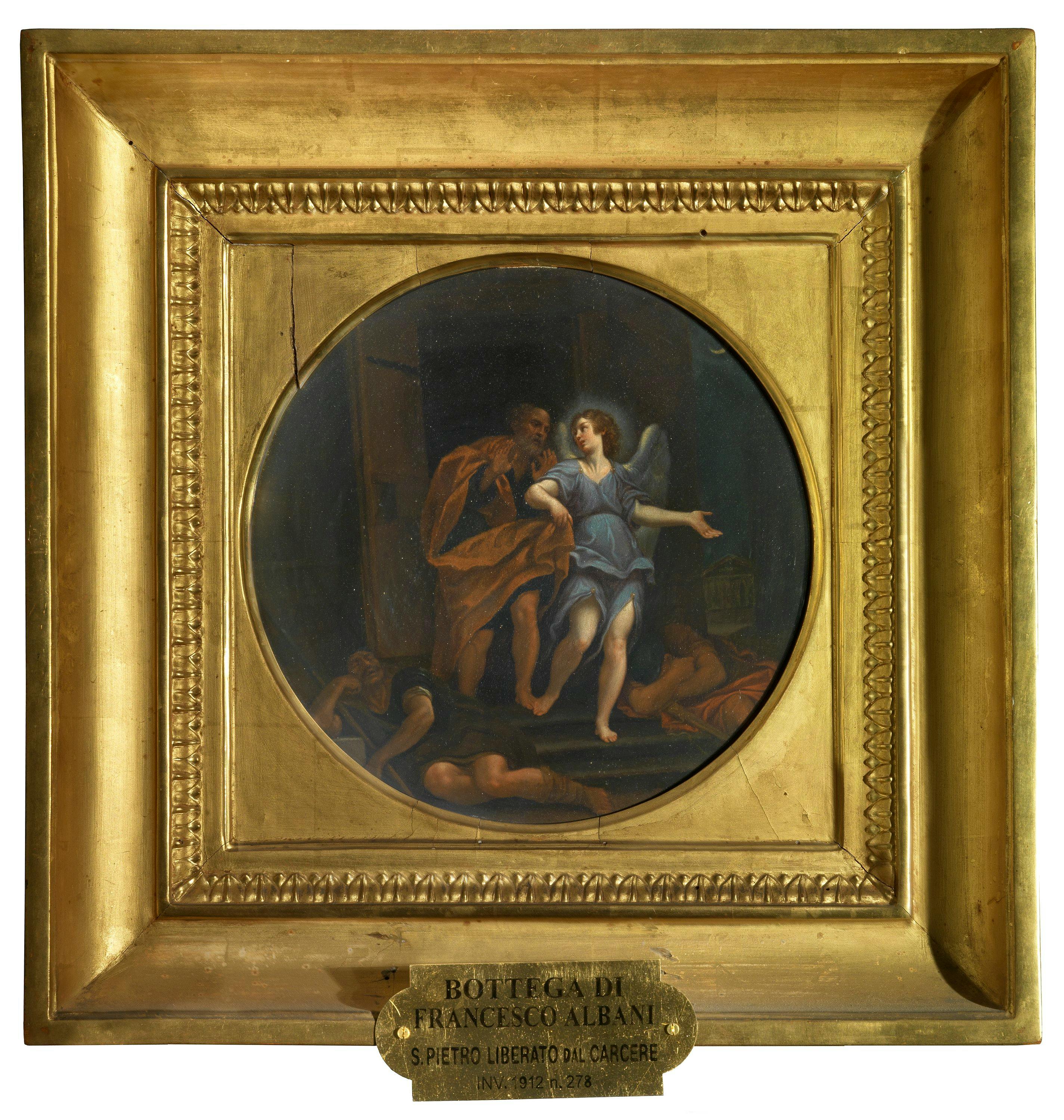Liberation of St Peter from Prison
Francesco Albani (Bologna 1578–1660)
In the Acts of the Apostles (Acts 12:1-19) it is recounted that in the days immediately before Easter, King Herod decided to imprison Peter, the future first pope of Rome, in order to subject him to the judgement of the people on the day of the feast. The night before the trial, while Peter was praying, an angel sent by God came to save him. This is the moment captured on Francesco Albani's canvas: the angel blazing with divine light leads Peter out of prison, passing by the bodies of asleep soldiers. Behind them, on the right and on the left, the presence of two other lights: the artificial light of a torch hidden behind a small window and the natural, cold light of the crescent moon, which makes its way through the clouds and illuminates the old-fashioned architecture in the background of the scene. The composition is inspired by the Liberation of St. Peter frescoed by Raphael in the Room of Heliodorus (the second of the four rooms that were part of the Vatican apartment of Julius II), a subject that thoroughly impressed artists, even after the 16th century, precisely because of the use of diversified light sources, capable of dramatically lighting up the scene and emphasising the feelings of each character.
Francesco Albani, together with Annibale and Ludovico Carracci, Guido Reni, Domenichino and Lanfranco, was one of the leading exponents of the pictorial current that developed in Bologna in the last decades of the 16th century, which promoted, alongside the study of great masters, the careful observation of reality and the practice of drawing from life, in order to represent any theme (religious, mythological or genre) with the greatest possible clarity and naturalness.
Pittori bolognesi del Seicento nelle gallerie di Firenze, catalogo della mostra (Firenze, Palazzo Pitti, febbraio – aprile 1975), a cura di E. Borea, Firenze 1975, pp. 108-109; E. Borea, Gli Uffizi. Catalogo Generale, Firenze 1979, p. 116, P16.
